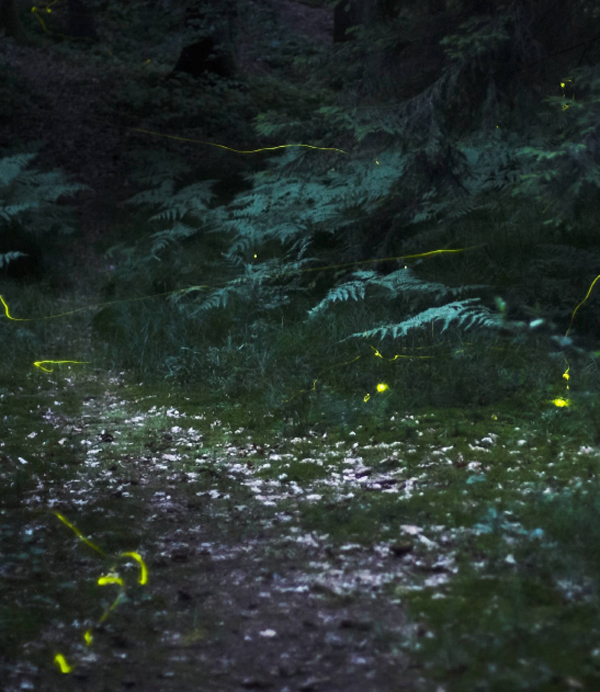1957
Luciferin
William David McElroy (1917–1999), Bernard Louis Strehler (1925–2001), Emil H. White (1926–1999)
If you’re a chemist (or any kind of scientist), you should always be ready to ask “How does that work?” How, for example, do fireflies give off light, over and over, in a controlled fashion? Why do their species have different color lights? What chemicals are emitting the light, and can they be used outside of fireflies?
American biochemists William David McElroy and Bernard Louis Strehler (a graduate student) worked out the answers to these questions in the 1940s and 1950s, and it was no small feat. The technology for natural-products chemistry at the time required milligram amounts of the material (at least), and individual fireflies contain far less than that. So McElroy took out newspaper advertisements that Johns Hopkins, where he was a professor, would pay one penny per firefly. It was money well spent—the children of Baltimore, far more efficient firefly catchers than grad students and postdocs would have been, and with more time to devote to the task, brought in fifteen thousand specimens.
Extracting dried firefly abdomens was tricky, but about nine milligrams of a compound called luciferin were eventually isolated, and its properties were described in a 1957 paper. It was a small aromatic ring compound containing nitrogen and sulfurs, as worked out by American chemist Emil H. White in 1961, and it showed fluorescence under ultraviolet light (although not the yellow-green firefly color, since fireflies were unlikely to be shining ultraviolet light on luciferin from inside their abdomens. But if luciferin was oxidized, it produced the characteristic glow. This is an example of chemiluminescence, formation of a high-energy chemical species that sheds this energy by emitting light. Fireflies have an enzyme (luciferase) that does this oxidation reaction.
Further work showed that all firefly species used the same luciferin, but that different forms of the enzyme seemed to cause the different colors (some fireflies glow orange). Luciferin can be combined with an oxidizing reagent to emit its glow on demand—thus, its use in glow sticks sold for parties and festivals. Additionally, luciferin is used as a glowing protein “tag” for biochemical assays.
SEE ALSO Natural Products (c. 60 CE), Fluorescence (1852), Green Fluorescent Protein (1962)

The distinctive yellow-green of firefly luminescence in a forest near Nuremberg, Germany, is shown in this long-exposure photograph.